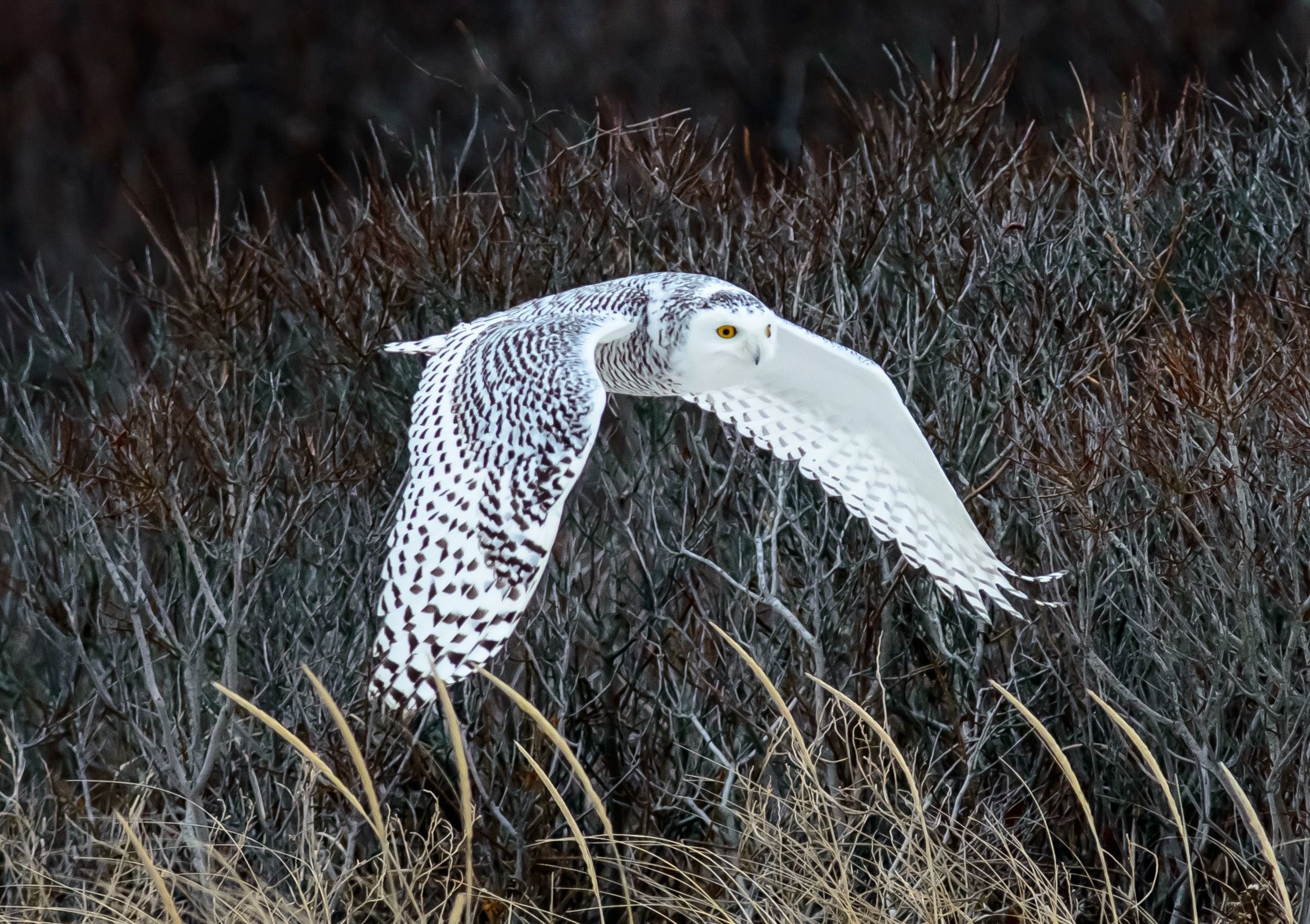
Ed Hughes
Updated November 23, 2020
Respecting Snowy Owls - Visitors from the Arctic Tundra
A few Snowy Owls are typically spotted in Rhode Island each year, and over the past few weeks a couple of these majestic birds have been sighted.
As nature enthusiasts flock to the shore in hopes of glimpsing these birds, Audubon experts worry about the stress these owls are facing - caused by their long journey, shortage of food and human interference. Chilly temperatures and fewer food sources mean that the winter months can be challenging for ALL birds. They need to be constantly refueling with high protein energy sources to maintain their body temperature. Birds can easily become stressed by people getting too close. Energy used to escape from perceived danger, is energy that cannot be used to locate food sources and shelter. All birds can face serious health consequences from nature enthusiasts trying to get too close or take the perfect photograph, including Snowy Owls.
Birders are also reminded to respect private property, including parking in or blocking driveways – even if it means waiting for another time to snap a photo or missing a rare bird sighting. Over the past several months, rare bird species have been sighted in Rhode Island, including the Common Cuckoo in Johnston. While Audubon understands the enthusiasm that these rare sightings bring, trampled habitat and trespassers on private farmland unfortunately was the result. Audubon urges all birders and nature enthusiasts to be respectful of private property and the natural habitat that sustains birds and wildlife. This includes sections of wildlife refuges that may be closed to the public for critical conservation purposes.
Audubon urges visitors to follow the guidelines for viewing Snowy Owls and other birds this winter.
Please respect Snowy Owls, visitors from the Arctic tundra.
-
Refrain from "checking-in" and geotagging the photos of these birds shared on social media platforms. This will ensure that less people (including those who are unaware of proper birding etiquette) will visit the sighting location.
-
Don’t try to creep close. Be content to view at a distance. Give Snowy Owls a space of 200 to 300 feet or more. This is not a bird you should be sneaking up on with your camera phone. Use binoculars and spotting scopes if you have them.
- Try to stay as a group if there is more than one observer. Never encircle the owl. All viewers should stay on one side of the bird.
- Snowy owls are powerful hunters and very capable of capturing prey – please do not try to feed them.
- Don’t observe these owls for an overly long period of time. Your presence causes stress.
- Do not trespass on private property or driveways, please respect the rights of others.
- Spread the word about respectful birding etiquette and keeping a safe distance. You can help to ensure that these Snowy Owls have a better chance of making it home to the arctic region this spring.
These birds are protected by The Migratory Bird Treaty Act of 1918 (MBTA), a United States federal law. Violations of harassment or endangerment of these birds should be immediately reported to:
RI Department of Environmental Management Law Enforcement, 401-222-3070
About the Snowy Owl
To see an owl is a gift in itself, but to see a large, white Snowy Owl is magical. They can be found during the day, out in the open along the shore, on the ground or on a low bush, rock or fence post. On rare occasions, they will head inland and then these large white birds might be observed in urban areas, often on rooftop perches.
Their beautiful yellow eyes are striking and their feathery talons make it appear as if they are wearing snowshoes. And if you glimpse them in flight, you will witness a five-foot wingspan. Snowy Owls are simply majestic to behold.
Many wonder why Snowy Owls travel south to begin with, and why their numbers are so much higher in certain years. “It's all about food!” explains Audubon Senior Director of Education and expert birder Lauren Parmelee. “Snowy Owl numbers are closely connected to the populations of rodents in the Arctic region called lemmings. In years when there are plenty of lemmings, these owls lay more eggs and successfully raise a larger number young to adulthood. But when winter comes to the tundra, competition for food increases dramatically and many of the younger birds disperse beyond the boundaries of their arctic habitat.” These hungry birds will then travel a great distance looking for food and will appear on the beaches and rocky shorelines in Rhode Island and other coastal states.

















